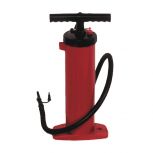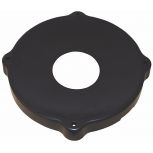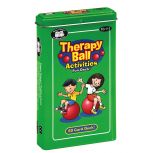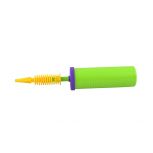- Home
- Inflatable Exercise Balls
- 866-323-5465
- Mon-Fri, 7am-5pm CST
- Need Help?
Inflatable Exercise Balls
Quick Overview
Exercise Balls are used as aids for vestibular movement and equilibrium therapy and as an aid for stretching and strength programs.
| Item # | Product Name | Availabilty | Price | Qty |
|---|---|---|---|---|
| 1003144 |
Inflatable Exercise Ball, Blue, 30 cm (12")
|
In Stock |
$13.99
|
Add to Supply List
|
| 1003145 |
Inflatable Exercise Ball, Yellow, 45 cm (18")
|
In Stock |
$16.99
|
Add to Supply List
|
| 1003146 |
Inflatable Exercise Ball, Orange, 55 cm (22")
|
In Stock |
$20.99
|
Add to Supply List
|
| 1003147 |
Inflatable Exercise Ball, Green, 65 cm ( 26")
|
In Stock |
$25.99
|
Add to Supply List
|
| 1003141 |
Inflatable Exercise Ball, Red, 75 cm (30")
|
In Stock |
$33.99
|
Add to Supply List
|
| 1003142 |
Inflatable Exercise Ball, Blue, 85 cm (34")
|
Ships Soon |
$38.99
|
Add to Supply List
|
| 1003143 |
Inflatable Exercise Ball, Red, 95 cm (38")
|
Ships Soon |
$52.99
|
Add to Supply List
|
Use inflated balls to improve balance, coordination, flexibility, strength and even just for fun. Balls are used as aids for vestibular movement and equilibrium therapy and as an aid for stretching and strength programs. Exercise balls strengthen core muscles, and provide great seating options for kids and adults who need to wiggle.
Use as a balance ball when fully inflated to develop proper posture and sitting habits, and for children who are sensory seekers and need a good bounce. Children who are sensory under-responsive and need good positioning for their core will also enjoy using this.Partially deflate the therapy ball and use it for sensory over-responsive kids who need to calm down. While partially deflated, the oversized ball provides a calm space for sitting.
Non-slip PVC vinyl surface is ribbed for extra security. Balls may be "under" inflated to give a soft, mushy feel or fully inflated for a firm, bouncy feel. Supports up to 300 lbs.
To select the right size ball for seating or exercise, measure the user's arm length from arm pit to fingertip. Choose the corresponding size ball or the nearest size up. If in between sizes, order next size up.
Ball sizing guideline. Ball size reflects maximum inflation.
| User height | Ball diameter |
|---|---|
| under 56” | 18” (45 cm) |
| 57” – 63” | 22” (55 cm) |
| 64” – 72” | 26” (65 cm) |
| 73” – 79” | 30” (75 cm) |
| over 80” | 34” (85 cm) |
| Assembly Required | No |
|---|
A therapy or exercise ball may not look like something much thought needs to be put into before purchasing. In order to get the most effective (and fun) ball for your needs, there are a few things to take into consideration.
Choosing The Right Size
Follow recommendations form a physical therapist or occupational therapist. If a consultation isn’t possible, you can still make a well-educated choice by following these three guidelines:
- With the user seated upright on the exercise ball, check that their feet are flat on the ground. Also, make sure that their weight is even distributed across the top of the ball.
- Knees should be level or slightly lower than the pelvis. Ideally, this will create a 90-degree angle at both the hips and the knees with the user’s thighs parallel to the ground or pointing down slightly.
- The ears, shoulder and pelvis of the user should be in a vertical line, with no leaning necessary to act as a counter balance to keep them on the ball. If the user is leaning, try having them bounce up and down a little. This should assist with the alignment.
A quick general rule for determining the best size for an exercise ball: measure the distance from the user’s armpit to the middle finger tip. This measurement will give you a decent estimate of what the diameter of your ball should be.
Weight and Inflation
While height plays the biggest role in finding the best size for your exercise ball, it is also important to take the user’s weight into consideration. A user whose weight-to-height ratio is higher than average will cause greater compression to the ball when they are seated. These users may want to buy the next step up in size in order to maintain the comfort and effectiveness provided by the 90-degree rule.
Adjusting the amount of air in the exercise or therapy balls can also help achieve the 90-degree rule. If the angles at the user’s hips and knees are much greater or less than 90-degree, the ball can be inflated or deflated a bit to compensate. Just be mindful of how much air pressure is lost or gained. Too little air in the ball can make stabilizing and balancing exercises too easy and less effective; too much air pressure could make these exercises too difficult.
| Choking Hazard | No |
|---|---|
| Sterile | No |




